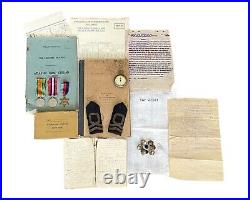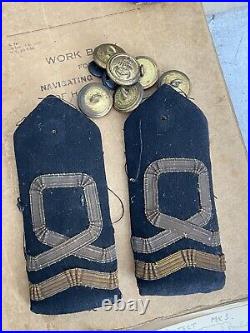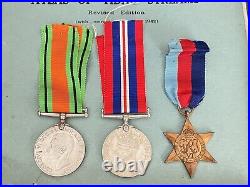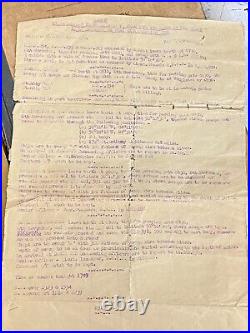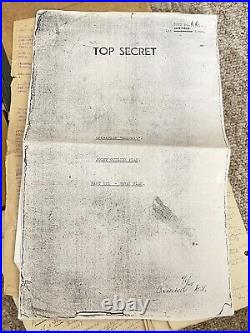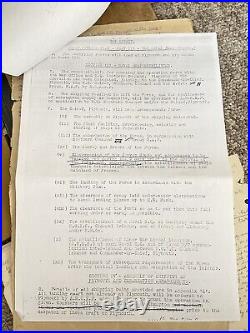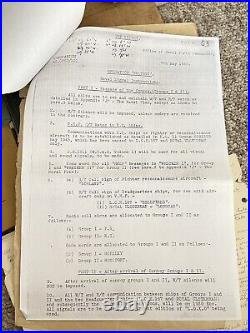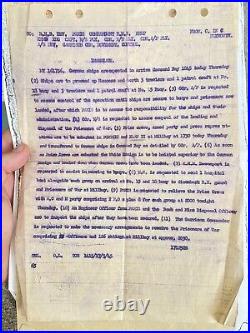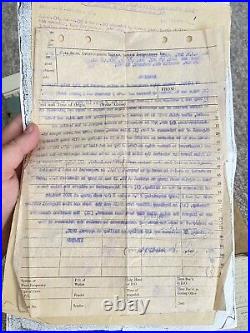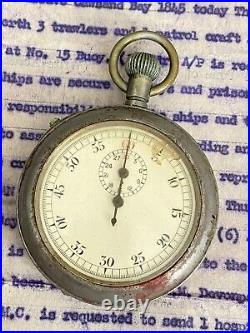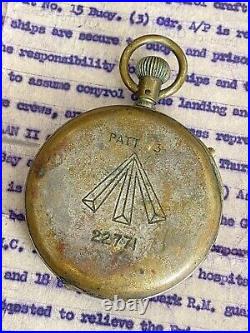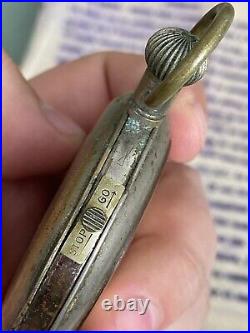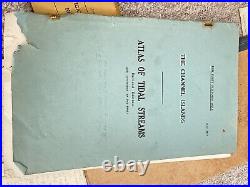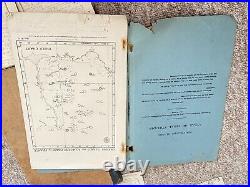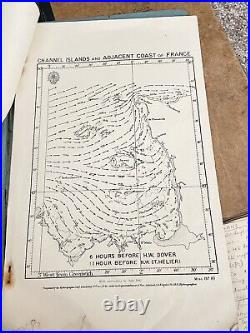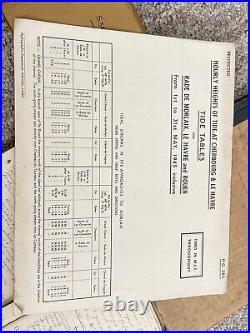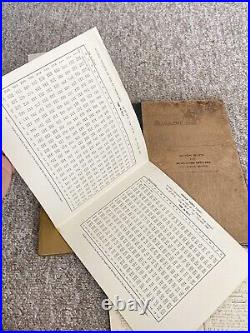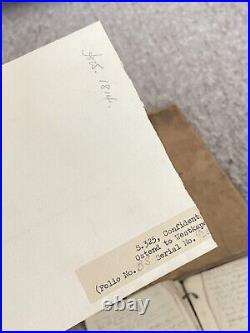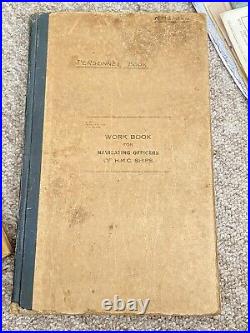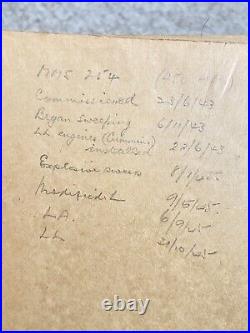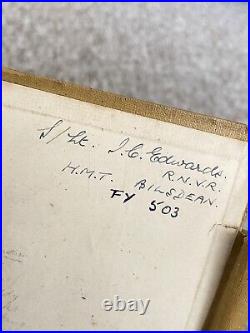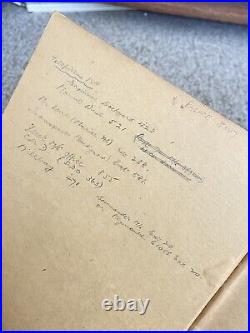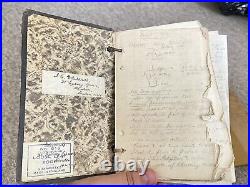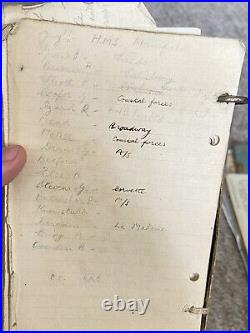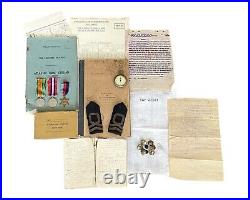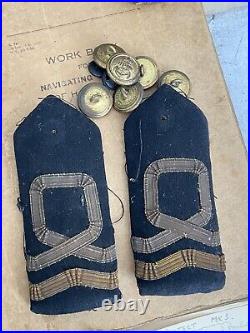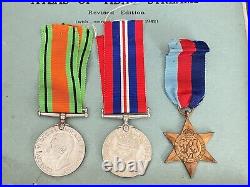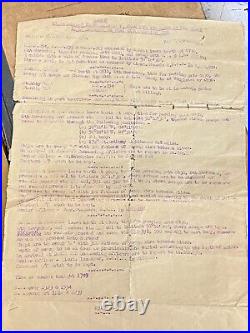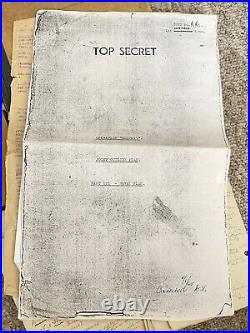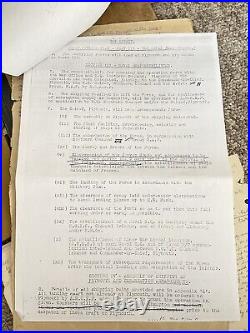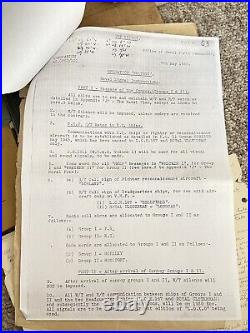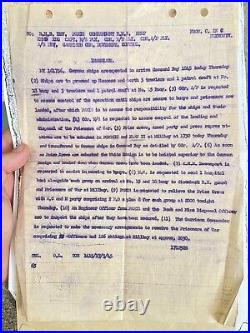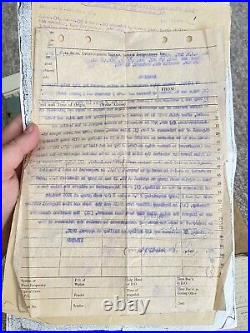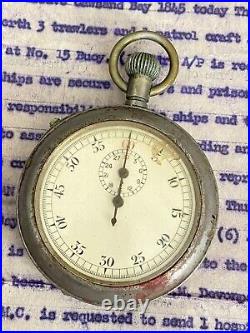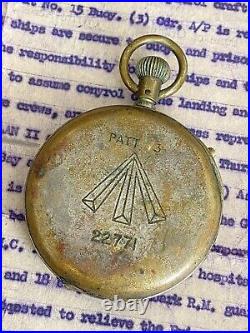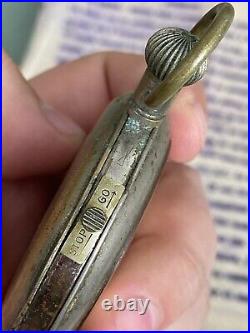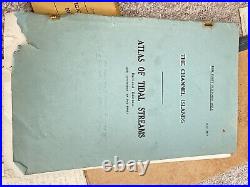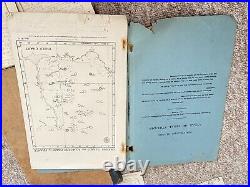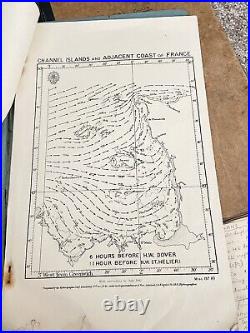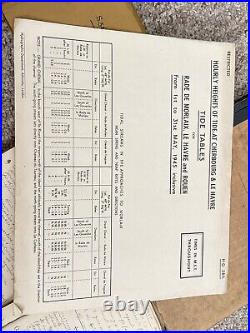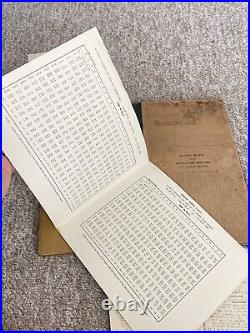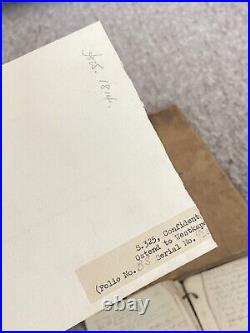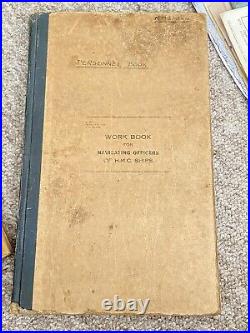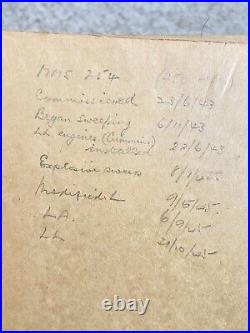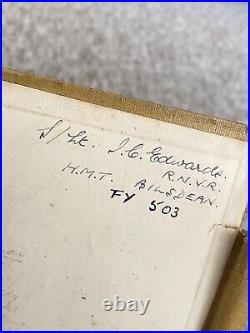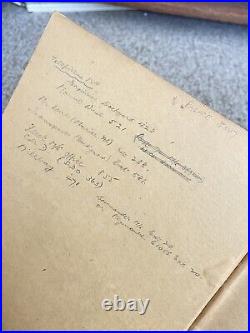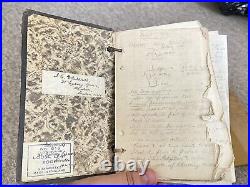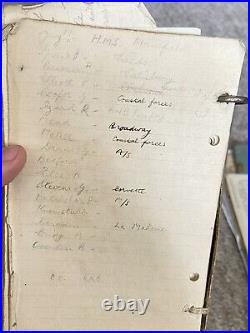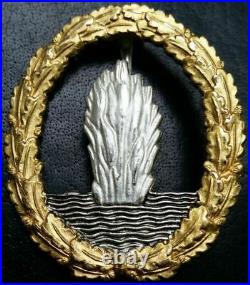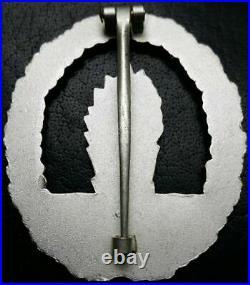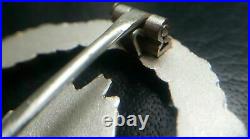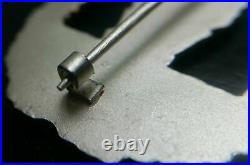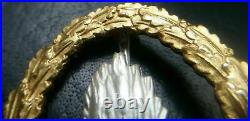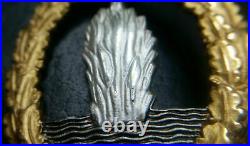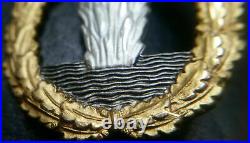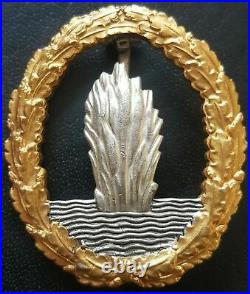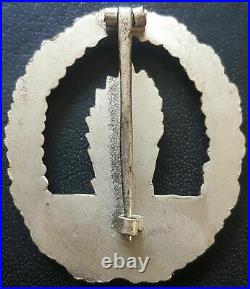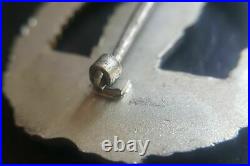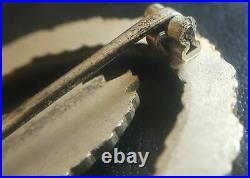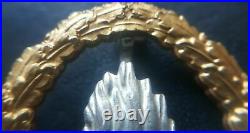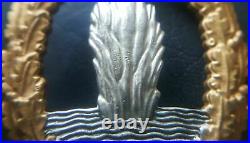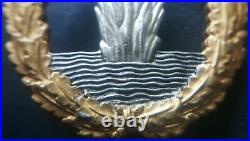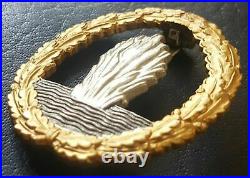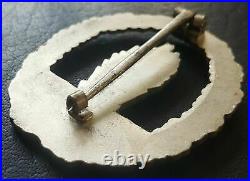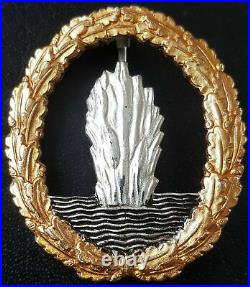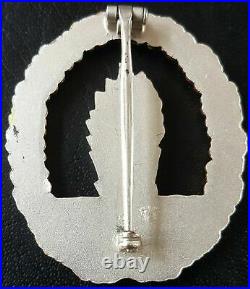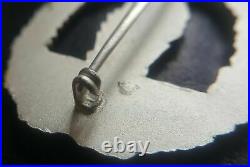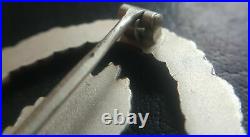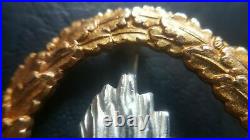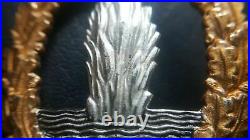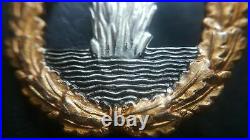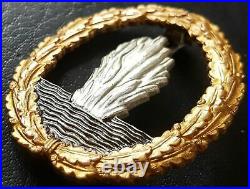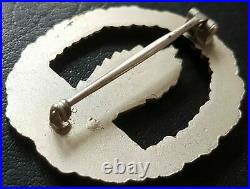Posts tagged minesweeper
For sale is a Rare WW2 Royal Navy Minesweeper Operation Nestegg Medals & Document Grouping. This grouping belongs to I. Edwards who served with the Royal Navy reserve in command of HMT Bilsdean. Before joining the Royal Navy Edwards lived at 21 Sydney Grove, Hendon, London, N. All of the belongings mentioned below belonged to lieutenant I. Edwards, and his contribution to operation Nestegg, and the surrender of the German navy in Millbay. This medal group includes the following. The personnel book of MMS-class minesweeper 254 (RMT Bilsdean). All of these questions are answered for each of the 46 servicemen under his control onboard MMS254. This handwritten book holds excellent research potential into many serviceman’s history. Original Orders of German navy surrender at Millbay on the 17/5/1945 a full write up of this can be seen below. This can also be seen in image number 8. Originals orders, that run inside operation Nestegg, titled; “Secret on no account to be allowed to fall into the hands of the enemy to be destroyed by fire when complied with”. This document can be seen in image number 4. These orders are for minesweeping of the covid route and anchorage’s to be carried out during the 2 days prior to the arrival of the force and subsequently the establishment of the swept channels inter island and between the islands and the mainland of France. These are original orders, with most likely no other surviving copies, seeing as all other copies would have been burnt on completion. Following the previous item is a scam/ copy of the at the time top secret operation Nestegg. This is titled Operation Nestegg, Joint Outland plan, part iii Naval plan. Part 7v of this plan is underlined and this is the section of the plan that we have the original orders for above. WW2 Royal Navy Admiralty Pattern Split Second Stop Watch, marked Patt 3 22771. A set of 6 ww2 Royal Navy uniform buttons. Pair of Ww2 Lieutenant Royal Navy Epaulettes. For fleet purposes only, the Channel Islands, atlas of tidal streams. Restricted: HOURLY HEIGHTS OF TIDE. AT CHERBOURG & LE HAVRE TIDE TABLES FOR ROAD OF MORLAIX, LE HAVRE and ROUEN From 1st to 31st MAY, 1945 inclusive. Section of a map marked on back; S. 325 confidential Ostend to westkape folio no b8 serial no 925. The military re-occupation of the Channel Islands in 1945 was code-named Operation Nestegg. In command was 46-year old Brigadier Alfred Snow. The special detachment – Force 135 – sailed from Plymouth in the Royal Navy destroyers HMS Bulldog and HMS Beagle. But when the task force arrived off Guernsey on 8th May – Victory in Europe Day – no-one was sure if the German garrison, under Vice-Admiral Friedrich Huffmeier, would surrender peacefully. Item number (3) listed above states document in purple typed ink. To: RNS DEV, Paris Commandant RMB KHMP. XDO Capt M/S Ply, CDR, M/S Ply, Cdr A/P Ply, A/S Dev, Garrison CDR, movement, control. From commander in chief Plymouth. 18 buoy and 3 trawled and 1 patrol craft at no 15 buoy. M/s is requested to assume control of the landing and disposal of prisoners of war. (6) as soon as prize. Crews are embarked, the white & is to be hoisted superior to German & and hold down when German crews have been landed. M Devonport as requested to assist in mooring to buoys (8) M. C as requested to send I hospital boat. Alongside each group on arrival at number 15 and 18. Buoy to disembark Royal Navy, guard and prisoners of war at Millbay. (9) Paris is registered to relieve the prize crews with A, C and M party comprising 2P. 0 s plus 8 for each group at 2000 tonight Thursday. (11) the garrison commander as requested to make the necessary arrangements to receive the prisoners of war comprising of 22 officers and 126 ratings at MillBay at approx 2030. This grouping has a good amount of research potential and played a major role in operation Nestegg, and has an incredibly rare set of orders for the German naval surrender. If you would like to see more photos please message me for more details.
For sale is a Rare WW2 Royal Navy Minesweeper Operation Nestegg Medals & Document Grouping. This grouping belongs to I. Edwards who served with the Royal Navy reserve in command of HMT Bilsdean. Before joining the Royal Navy Edwards lived at 21 Sydney Grove, Hendon, London, N. All of the belongings mentioned below belonged to lieutenant I. Edwards, and his contribution to operation Nestegg, and the surrender of the German navy in Millbay. This medal group includes the following. The personnel book of MMS-class minesweeper 254 (RMT Bilsdean). All of these questions are answered for each of the 46 servicemen under his control onboard MMS254. This handwritten book holds excellent research potential into many serviceman’s history. Original Orders of German navy surrender at Millbay on the 17/5/1945 a full write up of this can be seen below. This can also be seen in image number 8. Originals orders, that run inside operation Nestegg, titled; “Secret on no account to be allowed to fall into the hands of the enemy to be destroyed by fire when complied with”. This document can be seen in image number 4. These orders are for minesweeping of the covid route and anchorage’s to be carried out during the 2 days prior to the arrival of the force and subsequently the establishment of the swept channels inter island and between the islands and the mainland of France. These are original orders, with most likely no other surviving copies, seeing as all other copies would have been burnt on completion. Following the previous item is a scam/ copy of the at the time top secret operation Nestegg. This is titled Operation Nestegg, Joint Outland plan, part iii Naval plan. Part 7v of this plan is underlined and this is the section of the plan that we have the original orders for above. WW2 Royal Navy Admiralty Pattern Split Second Stop Watch, marked Patt 3 22771. A set of 6 ww2 Royal Navy uniform buttons. Pair of Ww2 Lieutenant Royal Navy Epaulettes. For fleet purposes only, the Channel Islands, atlas of tidal streams. Restricted: HOURLY HEIGHTS OF TIDE. AT CHERBOURG & LE HAVRE TIDE TABLES FOR ROAD OF MORLAIX, LE HAVRE and ROUEN From 1st to 31st MAY, 1945 inclusive. Section of a map marked on back; S. 325 confidential Ostend to westkape folio no b8 serial no 925. The military re-occupation of the Channel Islands in 1945 was code-named Operation Nestegg. In command was 46-year old Brigadier Alfred Snow. The special detachment – Force 135 – sailed from Plymouth in the Royal Navy destroyers HMS Bulldog and HMS Beagle. But when the task force arrived off Guernsey on 8th May – Victory in Europe Day – no-one was sure if the German garrison, under Vice-Admiral Friedrich Huffmeier, would surrender peacefully. Item number (3) listed above states document in purple typed ink. To: RNS DEV, Paris Commandant RMB KHMP. XDO Capt M/S Ply, CDR, M/S Ply, Cdr A/P Ply, A/S Dev, Garrison CDR, movement, control. From commander in chief Plymouth. 18 buoy and 3 trawled and 1 patrol craft at no 15 buoy. M/s is requested to assume control of the landing and disposal of prisoners of war. (6) as soon as prize. Crews are embarked, the white & is to be hoisted superior to German & and hold down when German crews have been landed. M Devonport as requested to assist in mooring to buoys (8) M. C as requested to send I hospital boat. Alongside each group on arrival at number 15 and 18. Buoy to disembark Royal Navy, guard and prisoners of war at Millbay. (9) Paris is registered to relieve the prize crews with A, C and M party comprising 2P. 0 s plus 8 for each group at 2000 tonight Thursday. (11) the garrison commander as requested to make the necessary arrangements to receive the prisoners of war comprising of 22 officers and 126 ratings at MillBay at approx 2030. This grouping has a good amount of research potential and played a major role in operation Nestegg, and has an incredibly rare set of orders for the German naval surrender. If you would like to see more photos please message me for more details.
Original German Wehrmacht Heer Minesweeper War Badge post WW2 – 1957 pattern – no swastika, PERFECT CONDITION, very nice genuine Steinhauer & Lueck example, perfect pin device, most likely late 60′s or early 70′s, nice badge. In 1957 the West German government authorised replacement Iron Crosses with an Oak Leaf Cluster in place of the swastika, similar to the Iron Crosses of 1813, 1870, and 1914, which could be worn by World War II Iron Cross recipients. The 1957 law also authorised de-Nazified versions of most other World War II-era decorations (except those specifically associated with Nazi Party organizations, such as SS Long Service medals, or with the expansion of the German Reich, such as the medals for the annexation of Austria, the Sudetenland, and the Memel region). The main government contract to manufacture and supply these new de-nazified WW2 1957 official decorations went to the world famous German firm Steinhauer & Lueck, Luedenscheid Germany. Knights Crosses, Iron Crosses, Wound Badges, Tank Assault Badges etc were re-designed by Steinhauer & Lück – often with the oak-leaf spray replacing the swastika, with S&L having the sole patent rights to all WW2 1957 German decorations. S&L did not have the whole monopoly on medal making, other famous firms such as Deschler & Sohn, BH Maher and Juncker also manufactured these new German decorations. Lüdenscheid is situated between the cities Dortmund and Bonn. It was here that one of the youngest medal firms was founded in 1889 by August Steinhauer and Gustav Adolf Lück. The first production began in a cellar, the customer base continued to increase. A property was bought at 51 Hochstrasse which is still home for this famous company today. During WW2 Steinhauer & Lück produced medals and badges, like the famous Knights Cross and many other types of medals and badges. In 1957 this company was awarded the contract to produce all the newly re-designed legal WW2 1957 de-nazified decorations, plus the contract to manufacture all of Germany’s official decorations including Germany’s highest order the Bundesverdienstkreuz. Only a very limited number of original WW2 1957 medals are still produced, mainly Iron Crosses, German Cross Gold & Silver & Wound Badges and are considered 100% genuine by the German Government. HISTORY OF THE AWARD. The Minesweeper Badge was designed by sculptor Otto Placzek of Berlin and featured a large silver water funnel in the center of the badge. A gold wreath of oak leaves surrounds the water funnel with the national emblem at the top, wings outspread clutching a swastika. Examples of the Minesweeper Badge can be found in both tombak and zinc. It is not uncommon for zinc examples to lose their finish overtime, which results in a dull gray appearance. Pin attachment style varied by maker but examples can be found in both vertical and horizontal configurations. T he premier maker of Minesweeper Badge’s was Schwerin, Berlin. The badge was presented with an award document and worn on the left breast. Miniature versions in both 9 & 16 millimeter were authorized for wear on civilian clothing. The following requirements were necessary to receive the badge: Participation in three operational engagements. Excellence for performance over a six month period (if other criteria not met). This item is in the category “Collectables\Militaria\World War II (1939-1945)\Medals/ Ribbons”. The seller is “a..anderson” and is located in this country: GB. This item can be shipped worldwide.
- Era: 1945-Present
- Country/ Organization: Germany
- Country/Region of Manufacture: Germany
- Theme: Militaria
- Conflict: World War II (1939-1945)
- Service: Army
- Type: Medals & Ribbons
Original German Wehrmacht Heer Minesweeper War Badge post WW2 – 1957 pattern – no swastika, PERFECT CONDITION, VERY NICE GENUINE ST&L (Steinhauer & Lueck) MADE EXAMPLE, MID / LATER EXAMPLE, MOST LIKELY FOM THE 70′S (OPEN HINGEBLOCK). In 1957 the West German government authorised replacement Iron Crosses with an Oak Leaf Cluster in place of the swastika, similar to the Iron Crosses of 1813, 1870, and 1914, which could be worn by World War II Iron Cross recipients. The 1957 law also authorised de-Nazified versions of most other World War II-era decorations (except those specifically associated with Nazi Party organizations, such as SS Long Service medals, or with the expansion of the German Reich, such as the medals for the annexation of Austria, the Sudetenland, and the Memel region). The main government contract to manufacture and supply these new de-nazified WW2 1957 official decorations went to the world famous German firm Steinhauer & Lueck, Luedenscheid Germany. Knights Crosses, Iron Crosses, Wound Badges, Tank Assault Badges etc were re-designed by Steinhauer & Lück – often with the oak-leaf spray replacing the swastika, with S&L having the sole patent rights to all WW2 1957 German decorations. S&L did not have the whole monopoly on medal making, other famous firms such as Deschler & Sohn, BH Maher and Juncker also manufactured these new German decorations. Lüdenscheid is situated between the cities Dortmund and Bonn. It was here that one of the youngest medal firms was founded in 1889 by August Steinhauer and Gustav Adolf Lück. The first production began in a cellar, the customer base continued to increase. A property was bought at 51 Hochstrasse which is still home for this famous company today. During WW2 Steinhauer & Lück produced medals and badges, like the famous Knights Cross and many other types of medals and badges. In 1957 this company was awarded the contract to produce all the newly re-designed legal WW2 1957 de-nazified decorations, plus the contract to manufacture all of Germany’s official decorations including Germany’s highest order the Bundesverdienstkreuz. Only a very limited number of original WW2 1957 medals are still produced, mainly Iron Crosses, German Cross Gold & Silver & Wound Badges and are considered 100% genuine by the German Government. HISTORY OF THE AWARD. The Minesweeper Badge was designed by sculptor Otto Placzek of Berlin and featured a large silver water funnel in the center of the badge. A gold wreath of oak leaves surrounds the water funnel with the national emblem at the top, wings outspread clutching a swastika. Examples of the Minesweeper Badge can be found in both tombak and zinc. It is not uncommon for zinc examples to lose their finish overtime, which results in a dull gray appearance. Pin attachment style varied by maker but examples can be found in both vertical and horizontal configurations. T he premier maker of Minesweeper Badge’s was Schwerin, Berlin. The badge was presented with an award document and worn on the left breast. Miniature versions in both 9 & 16 millimeter were authorized for wear on civilian clothing. The following requirements were necessary to receive the badge: Participation in three operational engagements. Excellence for performance over a six month period (if other criteria not met). This item is in the category “Collectables\Militaria\World War II (1939-1945)\Medals/ Ribbons”. The seller is “a..anderson” and is located in this country: GB. This item can be shipped worldwide.
- Era: 1945-Present
- Country/ Organization: Germany
- Country/Region of Manufacture: Germany
- Theme: Militaria
- Conflict: World War II (1939-1945)
- Service: Army
- Type: Medals & Ribbons
Original German Wehrmacht Heer Minesweeper War Badge post WW2 – 1957 pattern – no swastika, PERFECT CONDITION, VERY NICE GENUINE ST&L (Steinhauer & Lueck) EXAMPLE WITH RARE DOUBLE WIRE CATCH (PRODUCED BETWEEN 1963 – 1966), RARE VERSION. In 1957 the West German government authorised replacement Iron Crosses with an Oak Leaf Cluster in place of the swastika, similar to the Iron Crosses of 1813, 1870, and 1914, which could be worn by World War II Iron Cross recipients. The 1957 law also authorised de-Nazified versions of most other World War II-era decorations (except those specifically associated with Nazi Party organizations, such as SS Long Service medals, or with the expansion of the German Reich, such as the medals for the annexation of Austria, the Sudetenland, and the Memel region). The main government contract to manufacture and supply these new de-nazified WW2 1957 official decorations went to the world famous German firm Steinhauer & Lueck, Luedenscheid Germany. Knights Crosses, Iron Crosses, Wound Badges, Tank Assault Badges etc were re-designed by Steinhauer & Lück – often with the oak-leaf spray replacing the swastika, with S&L having the sole patent rights to all WW2 1957 German decorations. S&L did not have the whole monopoly on medal making, other famous firms such as Deschler & Sohn, BH Maher and Juncker also manufactured these new German decorations. Lüdenscheid is situated between the cities Dortmund and Bonn. It was here that one of the youngest medal firms was founded in 1889 by August Steinhauer and Gustav Adolf Lück. The first production began in a cellar, the customer base continued to increase. A property was bought at 51 Hochstrasse which is still home for this famous company today. During WW2 Steinhauer & Lück produced medals and badges, like the famous Knights Cross and many other types of medals and badges. In 1957 this company was awarded the contract to produce all the newly re-designed legal WW2 1957 de-nazified decorations, plus the contract to manufacture all of Germany’s official decorations including Germany’s highest order the Bundesverdienstkreuz. Only a very limited number of original WW2 1957 medals are still produced, mainly Iron Crosses, German Cross Gold & Silver & Wound Badges and are considered 100% genuine by the German Government. HISTORY OF THE AWARD. The Minesweeper Badge was designed by sculptor Otto Placzek of Berlin and featured a large silver water funnel in the center of the badge. A gold wreath of oak leaves surrounds the water funnel with the national emblem at the top, wings outspread clutching a swastika. Examples of the Minesweeper Badge can be found in both tombak and zinc. It is not uncommon for zinc examples to lose their finish overtime, which results in a dull gray appearance. Pin attachment style varied by maker but examples can be found in both vertical and horizontal configurations. T he premier maker of Minesweeper Badge’s was Schwerin, Berlin. The badge was presented with an award document and worn on the left breast. Miniature versions in both 9 & 16 millimeter were authorized for wear on civilian clothing. The following requirements were necessary to receive the badge: Participation in three operational engagements. Excellence for performance over a six month period (if other criteria not met). This item is in the category “Collectables\Militaria\World War II (1939-1945)\Medals/ Ribbons”. The seller is “a..anderson” and is located in this country: GB. This item can be shipped worldwide.
- Era: 1945-Present
- Country/ Organization: Germany
- Country/Region of Manufacture: Germany
- Theme: Militaria
- Conflict: World War II (1939-1945)
- Service: Army
- Type: Medals & Ribbons
